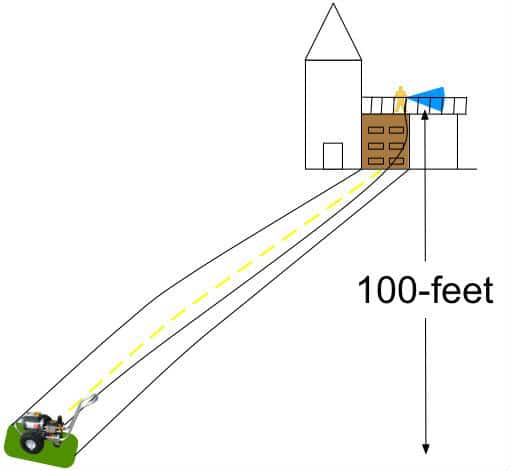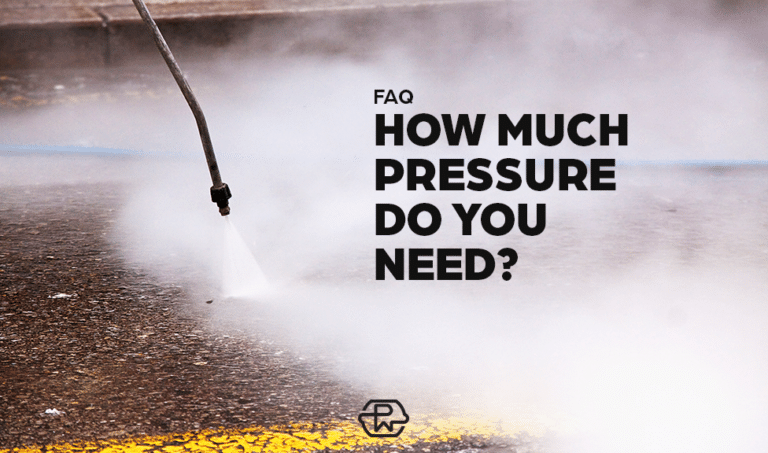Pressure Washer Hose Length Limit
The theoretical and practical limit on hose length when pressure washing is different.
Let’s find the theoretical first, then the practical, assuming:
- 1/2″ diameter hose
- Water flow rate of 2 GPM
- 2,500 PSI @ 2 GPM
- Flat ground
With those assumptions here are the hose length limits:
Theoretical hose length limit: 9.47-miles

- Pressure loses due to friction inside the hose are 5 psi for every 100-feet of hose length
- The hose has to be 50,000-feet (9.47-miles) long to have 0 psi at exit end.
Practical hose length limit: 200-ft

- 200-ft is long but still practical, about half the length of a soccer field
- This is assuming the hose and pressure unit are at the same elevation. And you’re on a relatively straight line of sight to the pressure unit. You could go well beyond 200-ft but it quickly becomes pointless due to risk of hose damage, weight of dragging the dead hose around… And, can’t you just get closer to the surface you’re cleaning?
- Also, 200-ft is about as long as you can go while still being able to siphon detergent/soap into the line. To visualize why, think about sucking soda through a 6-ft straw. Much harder than a 6-inch straw, right?
Practical Pressure Washing Hose Length Limitations
1.) Elevation changes
Do you need to park your truck and pressure washer at the bottom of a long steep driveway and walk the hose and pressure lance up to clean their back deck?
Let’s say the vertical height is 100 feet from your pressure washer unit to the elevated back deck.
Looks something like this:

How will this change the PSI and GPM at the top?
In short, there will be little noticeable change in PSI. The PSI (2,500 PSI to start) will have 43 PSI pressure loss due to elevation and around 5-10 PSI loss due to internal hose friction. You lose 50 PSI – only around 2% loss of pressure.
Also Read: How much pressure do I need my pressure washer to have?
2.) Risk of hose damage
Look at the drawing all the hose lying in the driveway/road. A car could run it over and burst it with no notice. A good quality pressure hose of that length will cost a few hundred dollars to repair. Not worth the risk.
3.) Dead weight of length of hose
It’ll be a struggle to move the hose around when it has been rolled out 100 or 200 feet on the ground, full of water. The friction is generates over that length will make moving it around all day exhausting.
4.) Start-stop delays
Let’s say you’re using a light-duty electric pressure washer with a 1.5 GPM flow rate. Once you pull the trigger to start washing you’ll have to wait for the water to reach you. The longer the hose the longer you’ll have to wait.
Not much else to add. One power washer will tell you 50-feet is the practical limit and another will tell you 250-feet. Weighing-up time saved, effort and risk you won’t want to regularly wash more than 150 or 200-feet from your power washer reel.





